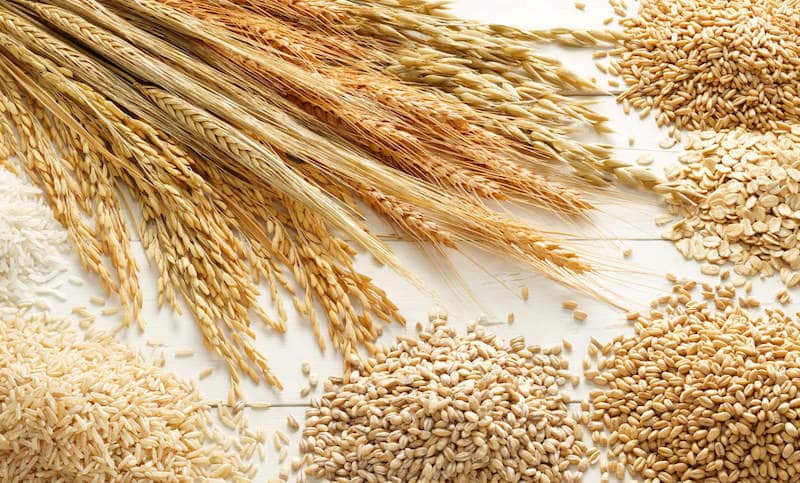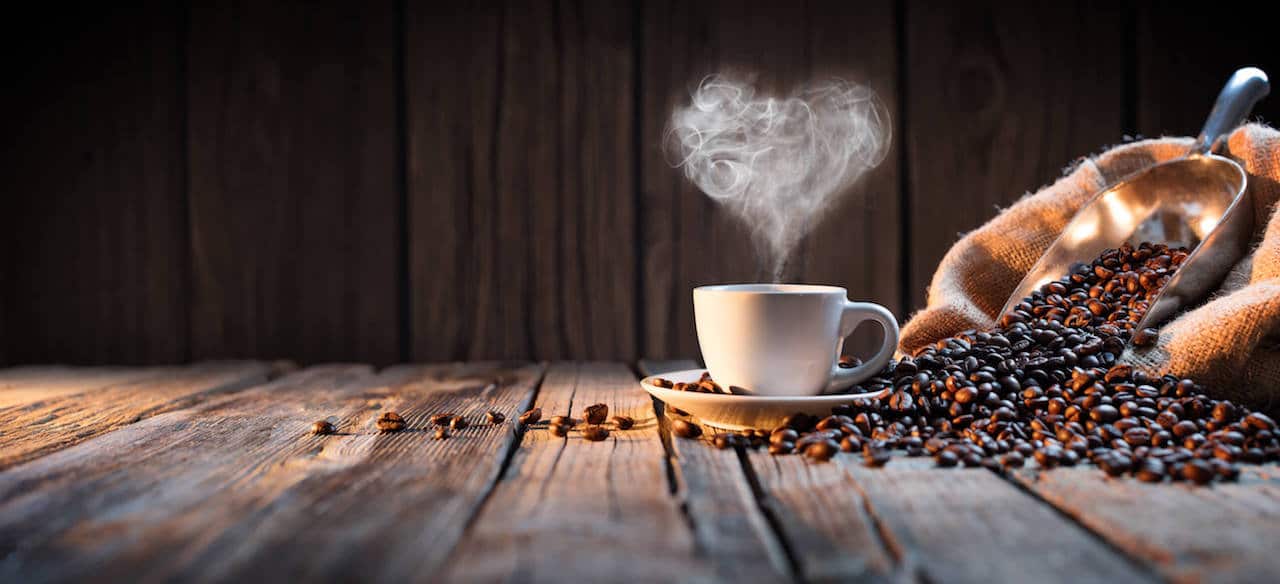When we think of mold, we usually picture moldy basements or walls, right? But what about foods containing mold?
Yeap, that’s right. Those fungi can create microscopic spores that float anywhere and everywhere and can land on… anything!¹’² Even food products. If they find what they need to survive (oxygen, moisture, food, and temperature) they’ll even start to grow on the surface and produce more spores. Not to mention, there’s a potential for mycotoxin presence as well.³ These microscopic toxins are produced by some species of molds and, like the spores, float through the air and land on any surfaces they come in contact with. The issue is that we can’t see these little particles, making it impossible to tell if they’re on our foodstuffs.
Not exactly the extra spice we’re looking for!
While many individuals can eat or drink items with mold spores on them, some of us are more sensitive to exposure. That can trigger a range of adverse health symptoms that continue day by day.⁴ From headaches and coughing to digestive issues and chronic fatigue, the exposure can wreak havoc on our bodies.
Luckily, we know of some foods that are just naturally prone to mold growth for one reason or another. By decreasing the amount of moldy food and beverages in a diet, those experiencing symptoms can finally begin to feel relief. Here is a list of the top foods containing mold.
DRIED FRUITS
Molds tend to love dried fruits like apricots, raisins, dates, and figs among others.⁵ Fruits naturally have a high moisture content so if they come into contact with mold spores while being prepped to dry, the spores can begin to grow and multiply.
The sugar content in fruits can also be a problem for trying to combat mold exposure. Like many of us, molds love sugar. They can eat the sugar molecules, creating the energy they need to survive, thrive, and multiply. Decreasing sugar intake helps to discourage their growth in the body. Unfortunately, most dried fruits have a high sugar content so staying away from them is the best option.

GRAINS
To all of the pasta and bread lovers out there, this may come as a severe blow. Between the growing stage, storage stage, and treatment stage, mold and toxins can be introduced to these delicious morsels at any point. ⁶ In fact, many governments already regulate the number of mycotoxins that can be present in grains intended for human consumptions. That’s a pretty big indicator that it’s a problem!
Staying away from all grains may seem like the worst possible thing on the planet, but it can help lower mold and toxin presence in the body.
CORN
This one is a tricky one. Corn can come into contact with mold spores at any time during their growing process.⁷ Add in the moisture corn needs to grow, and molds will grow right along with it. Add in the chance of mold encounters during the storage, and you’ve got the perfect storm for potential mold growth.
The issue is how many other products contain corn. For those with corn allergies, I’m sure you know just how difficult it can be to stay away from “corny” foodstuffs. We’re not just talking about grits and popcorn here- we’re also talking about high-fructose corn syrup and other corn sugars which are in… quite a lot of the foods our society eats. That brings us to the next group of products to avoid.
PROCESSED FOODS AND MEATS
When you go to the grocery store, processed foods are a huge portion of the options available. They’re cheap, convenient, and honestly, unusually pretty yummy. They’re also perfect Petri dishes for molds to grow. Between the high sugar content and presence of corn (in all kinds of forms) these products can be laden with mold and mycotoxins.
Processed meats in particular can be ultra-mold-ridden.⁸ Animals often eat feed contaminated with mold growth and mycotoxin presence (like corn again!). That means that by the time they make it to be processed, they contain mold and its byproducts. Not exactly the best image to have while munching on some yummy bacon.
It’s best to stay away from processed food as much as possible.

ALCOHOL
For those of us that enjoy a drink after a long day of work, this could be adding to our mold exposure. ⁹ Quite the bummer. While some alcohols have less likelihood for mold and mycotoxin presence, like tequila and vodka. On the other hand, beer and wine can be pretty high up on the list. Between the fermentation process, which involves yeast and mold, and the sugars, mold loves alcohol.
Again, while some spirits may contain less mold and mycotoxins, they all contain some form of grain or fruit which makes them susceptible to mold exposure.
MOLDY CHEESE
Seems pretty obvious but it goes without saying that cheeses with established mold presence, like blue cheese and Roquefort, should be avoided to stay away from mold toxicity. ¹⁰ However, cheese, in general, is an excellent environment for mold growth. Between the moisture and nutrients in the dairy product, they can easily support these fungi.
So, for those cheese-o-holics out there, unfortunately, it’s best to stay away from all of that deliciousness. Just say no to the cheese and charcuterie boards.
CONDIMENTS
Lots of those yummy additives already contain yeast and mold like salad dressings, ketchup, and mustard. Not to mention the plant-based products that can come into contact with mold at any time. So yes, condiments sadly make it to the list of foods containing mold that we need to stay away from.
Gives a whole new meaning to “hold the mayo!”
MOLDY CHEESE
Seems pretty obvious but it goes without saying that cheeses with established mold presence, like blue cheese and Roquefort, should be avoided to stay away from mold toxicity. ¹⁰ However, cheese, in general, is an excellent environment for mold growth. Between the moisture and nutrients in the dairy product, they can easily support these fungi.
So, for those cheese-o-holics out there, unfortunately, it’s best to stay away from all of that deliciousness. Just say no to the cheese and charcuterie boards.
CONDIMENTS
Lots of those yummy additives already contain yeast and mold like salad dressings, ketchup, and mustard. Not to mention the plant-based products that can come into contact with mold at any time. So yes, condiments sadly make it to the list of foods containing mold that we need to stay away from.
Gives a whole new meaning to “hold the mayo!”

COFFEE
This one may hurt a little bit. Coffee beans and mold thrive in the same environments: hot and humid. That gives ample opportunity for these two to meet during the growing and storing period. ¹¹ Companies also don’t have to test for mycotoxin presence in coffee, so those little toxins could also be found in that beautiful bean water you drink in the morning.
Staying away from coffee is best, just to stay on the safe side. But! Some companies do test for mycotoxins presence so looking for these brands can help mitigate the toxicity in our bodies.
MUSHROOMS
Let’s be honest, the population is probably split down the middle when it comes to loving and hating mushrooms which means giving these up probably won’t be a big deal to some. They also happen to be a fungus, just like mold! Not only can mold spores live on mushrooms (which adds to the toxification in your body), adding more fungus on top of an existing fungus problem doesn’t exactly help a situation.
So for those of us that don’t mind the taste and texture of mushrooms, joining forces with mushroom haters isn’t a bad idea.
PEANUTS
No more peanut butter jelly time… That’s right, peanuts are widely known to house Aflatoxin, a type of mycotoxin produced by molds. Other nuts can also have mold presence, but peanuts are by far the worst. ¹²’¹³ That means that whether you’re on the crunchy or smooth peanut butter team, it’s better to stay away from either to decrease mold exposure.
STAYING AWAY FROM FOODS CONTAINING MOLD
Following a low-mold diet may seem like a giant pain. In all honesty, it kind of is… But when you’re facing ongoing health symptoms caused by mold exposure, it’s absolutely the best decision to make. Decreasing the number of mold spores and mycotoxins consumed can give the body a chance to heal and regain proper balance. A healthy body means a healthy, happy life, and that’s worth staying away from food containing mold!
Still Have Questions?
A member of our team is here to help! Click on “Get Started ➤” below to book a consultation with a member of the HOMECLEANSE team. We have a few quick questions that will help us put together a roadmap to solve or prevent all of your mold problems.
Two minutes of your time could lead to better health for you and your family.
- Centers for Disease Control and Prevention. (2020, August 11). Basic facts about mold and dampness. Centers for Disease Control and Prevention. https://www.cdc.gov/mold/faqs.htm.
- Environmental Protection Agency. (n.d.). A Brief Guide to Mold, Moisture and Your Home . EPA. https://www.epa.gov/mold/brief-guide-mold-moisture-and-your-home.
- Richard, J. L. (2007). Some major mycotoxins and their mycotoxicoses—an overview. International Journal of Food Microbiology, 119(1-2), 3–10. https://doi.org/10.1016/j.ijfoodmicro.2007.07.019.
- Environmental and Occupational Health Assessment Program , & Environmental and Occupational Health Assessment Program , & Health Science Section, Mold Basics for Primary Care Clinicians (2009). Hartford, CT; Connecticut Department of Public Health. , H. S. S., Mold Basics for Primary Care Clinicians 1–10 (2009). Hartford, CT; Connecticut Department of Public Health.
- Ozer, H., OKTAY BASEGMEZ, H. I., & Ozay, G. (2012). Mycotoxin risks and toxigenic fungi in date, prune and dried apricot among Mediterranean crops. Phytopathologia Mediterranea, 148-157.
- Mohapatra, D., Kumar, S., Kotwaliwale, N., & Singh, K. K. (2017). Critical factors responsible for fungi growth in stored food grains and non-chemical approaches for their control. Industrial Crops and Products, 108, 162-182.
- Kurtzman, C. P., & Ciegler, A. (1970). Mycotoxin from a blue-eye mold of corn. Applied microbiology, 20(2), 204-207.
- Scott, P. M. (1984). Effects of food processing on mycotoxins. Journal of Food Protection, 47(6), 489-499.
- Scott, P. M. (2008). Mycotoxins in alcoholic beverages and fruit juices: Occurrence and analysis.
- Banjara, N., Suhr, M. J., & Hallen-Adams, H. E. (2015). Diversity of yeast and mold species from a variety of cheese types. Current microbiology, 70(6), 792-800.
- Velmourougane, K., Bhat, R., Gopinandhan, T. N., & Panneerselvam, P. (2011). Impact of delay in processing on mold development, ochratoxin-A and cup quality in Arabica and Robusta coffee. World Journal of Microbiology and Biotechnology, 27(8), 1809-1816.
- Aflatoxins in Your Food – and their Effect on Your Health. Information about health & Aflatoxins in foods such as peanut butter. (2021, March 9). https://www.ehso.com/aflatoxin.php.
- USDA. (2013, August 22). Food safety and Inspection Service. Molds on Food: Are They Dangerous? | Food Safety and Inspection Service. https://www.fsis.usda.gov/food-safety/safe-food-handling-and-preparation/food-safety-basics/molds-food-are-they-dangerous.
Must-Have Indoor Air Quality Tools
-

EC3 Laundry Additive
Add EC3 to every rinse cycle to rinse away mold, bacteria and musty odors from...
-
$23.00 Shop Now -

Intellipure Compact Air Purifier
Small in size, but delivers powerful results, reducing airborne microorganisms like mold, viruses, and bacteria.
-
$649.00 Shop Now -

Intellipure SuperV Whole House Air Purifier
Turn your HVAC into a filtration system, removing 99% of ultrafine particles including airborne mold,...
-
Price range: $2,000.00 through $2,995.00 Shop Now -

HomeCleanse Cleaning
Take your cleaning to the next level buying all the tools we use to keep...
-
Price range: $299.00 through $549.00 Shop Now -

Mold & Bacteria Contents Cleaning
Remove harmful pollutants that accumulate in the dust of your home. (Options available for renters...
-
Price range: $99.00 through $349.00 Shop Now -

EC3 Mold Solution Concentrate
Micro Balance EC3 Mold Solution Concentrate is a natural botanical that removes mold spores, bacteria,...
-
$33.00 Shop Now -

Industry-Leading Intellipure Ultrafine 468
The Intellipure® Ultrafine 468 features our proprietary DFS technology, which traps and eliminates potentially harmful...
-
Shop Now -

The Dust Test
The Dust Test is a comprehensive at-home test that helps you identify mold and toxins...
-
$299.00 Shop Now -

EuroClean 4 Gallon Hepa Vacuum
The Euroclean GD930HSP is a 4 Gallon Dry HEPA Vacuum that meets the EPA's standards...
-
$849.00 Shop Now -

AprilAire E080 Professional Dehumidifier Bundle
Includes all the dehumidifier accessories you will need. Our Aprilaire E080 comes with a drain...
-
$1,524.99 Shop Now
